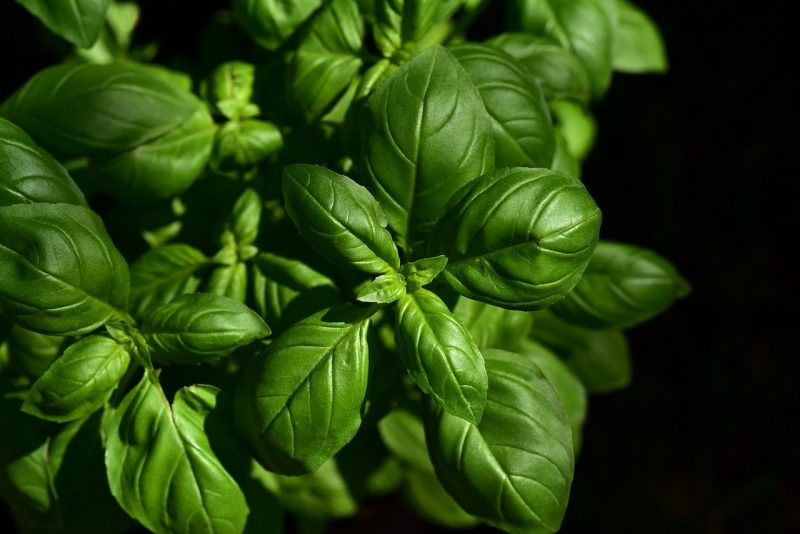You can learn how to fertilize basil for success by considering three factors, and this article will discuss them shortly. We all know how basil is one of the best crops to grow, whether traditionally or via hydroponics, but one component that gardeners often overlook is its fertilizing requirements.
The University of Minnesota Extension recommends getting your soil tested to know your basil’s proper fertilizer regimen. Remember that having a list of what your soil needs to grow basil successfully will allow you to use fertilizers optimally. It’s best to get your soil tested first and apply the knowledge below.

How To Fertilize Basil For Success
When growing seedlings
As mentioned earlier, there are three considerations when fertilizing basil, and the first one is you can feed when growing them as seedlings. A balanced liquid fertilizer should support seedlings’ growth, and you can provide this once a week. However, be mindful of your crops’ leaves since if they turn brown, you are probably overfertilizing and burning your plants.
How does one avoid the risk of overfertilizing basil? Doing a soil test is best because you can find out the quality and nutrients of the medium. Therefore, you might not even need to fertilize the basil seedlings, or amending the soil with compost during planting can suffice.
When transplanting
Another consideration to remember when learning how to fertilize basil is during transplanting. Some gardeners often start basil plants indoors if the conditions outside will be challenging to root the plants. And to further help with the establishment, you can incorporate fertilizer into the soil during transplanting.
You may also benefit from feeding with dry fertilizer at least once during the growing season to support healthy basil plants. If you have just planted seedlings in the garden, all-purpose fertilizer will help basil every two weeks. However, do note that caution is necessary with dry fertilizer because they can burn the leaves upon contact.
Clemson Cooperative Extension even recommends fertilizing two months after planting basil if you notice that the plants are pale green and growing slowly. The extension recommends side dressing with calcium nitrate in addition to watering and mulching. The rate is ¼ pound for every 100 square feet.
For indoor growing
You can also grow basil with other crops in the greenhouse, but you have to remember that fertilizing indoor basil will be a different regimen than growing outdoors. You must provide a balanced liquid fertilizer at half the amount of what you use in the garden and feed twice a week.
What about those growing container basil plants? Those who grow indoors can feed once every four weeks, but this can be more frequent if you have the pots outdoors. More so, the ideal fertilizer for container basil is water-soluble that you will dilute before pouring onto the soil.
How To Water Basil
Now that you know how to fertilize basil, it’s only right that you also learn how to water basil correctly. Like other green leafy crops, you can assume that moist soil is essential to growing green and productive basil plants. However, you have to be mindful of this practice because watering incorrectly can wet the leaves and foliage.
Method
This will encourage mildew and other fungal diseases that can affect your plants. Therefore, aim to water at the base instead of the top of the plants. If you have a greenhouse, avoid overhead irrigation, and those growing in the garden should skip high-pressure watering equipment that can erode the ground.
A watering technique appropriate for basil is by thoroughly soaking them slowly. You can use a soaker hose or a watering can to moisten the soil. And since they are slow-running and low-pressure, you don’t run the risk of waterlogging the ground that can kill the basil plants.
Timing
You don’t have to water during the rainy season because overwatering is detrimental to basil plants. Check if the top 2 inches of the soil is dry before watering. More so, aim to water early in the morning to ensure that the plants will dry up when the cold night temperatures happen.
How To Prune Basil
You can grow basil in the greenhouse to maintain the ideal growing environment and produce healthy plants. However, you can also do another maintenance practice to encourage the productivity of basil. Basil will benefit from pruning to create more leaves, and you can do this when you saw the first six leaves.
You can continue this practice on the branches with six leaves and prune back to the first leaf set. Some gardeners also pinch the center shoots to prevent the flowering of your new plants. Otherwise, you can cut the flowers off.
Conclusion
When it comes to popular herbs, perhaps the top picks would always include basil. But to have an excellent yield of green herbs, you must know how to fertilize basil and remember the three considerations. For example, you can feed seedlings to support their growth using a balanced fertilizer once a week.
On the other hand, do a soil test when planting or transplanting basil to gauge if you need to fertilize. Sometimes, you can amend the soil with compost or side-dress with calcium nitrate. Lastly, water-soluble fertilizer once every four weeks is optimal when growing basil in containers.
